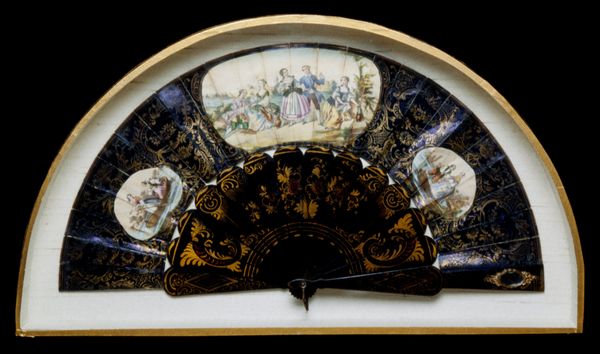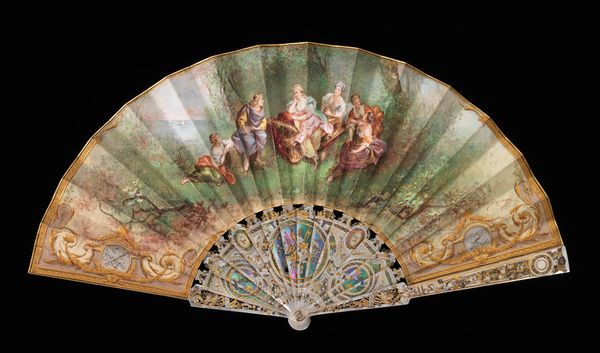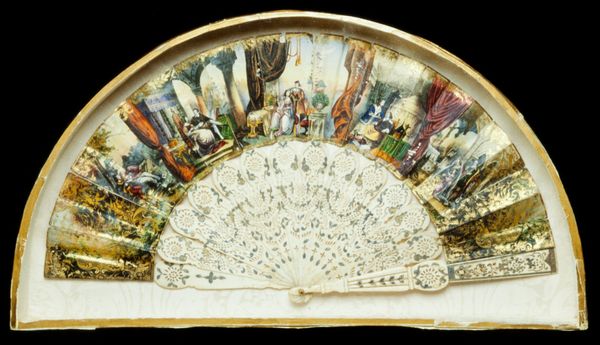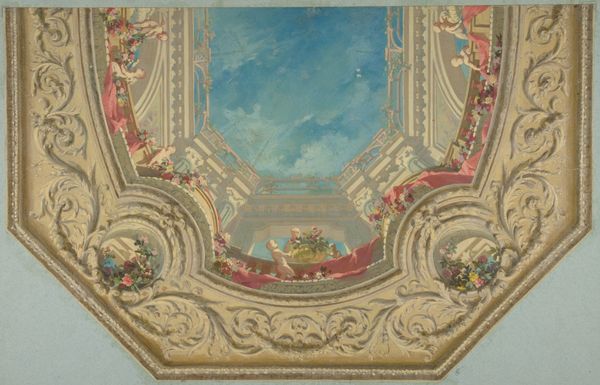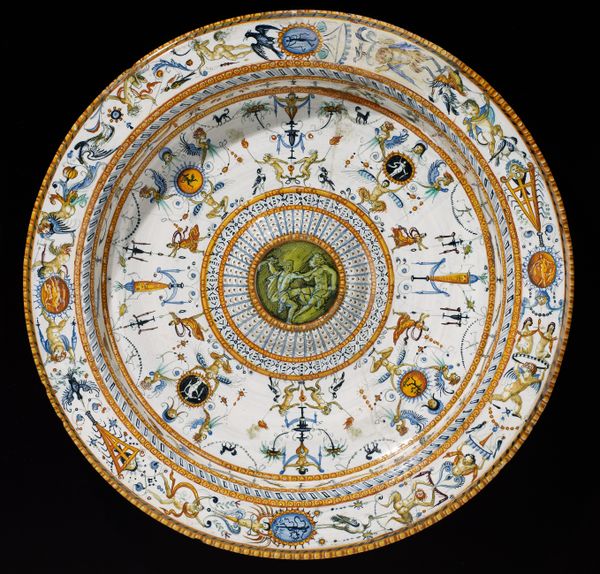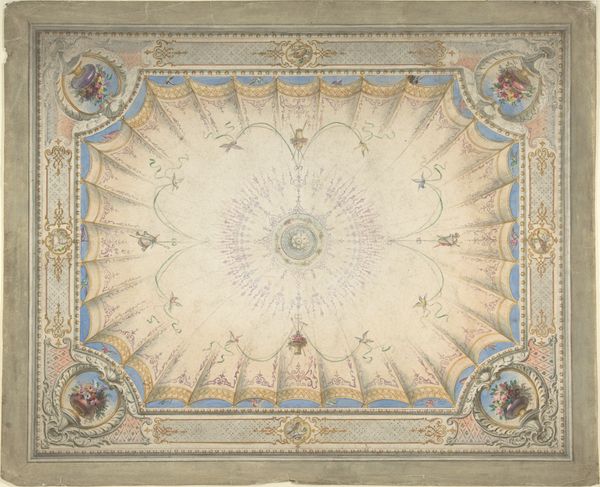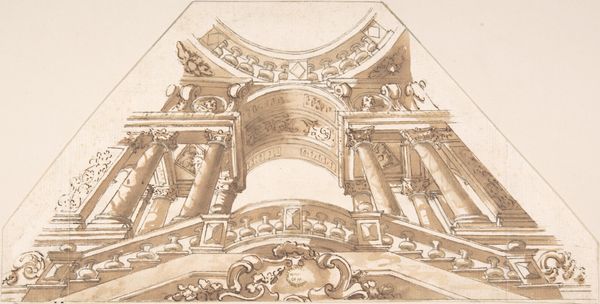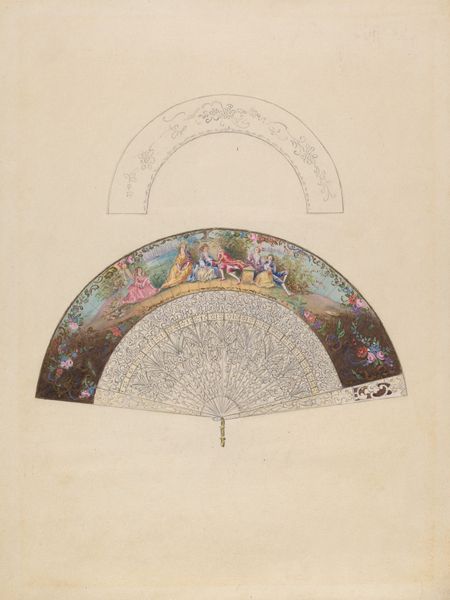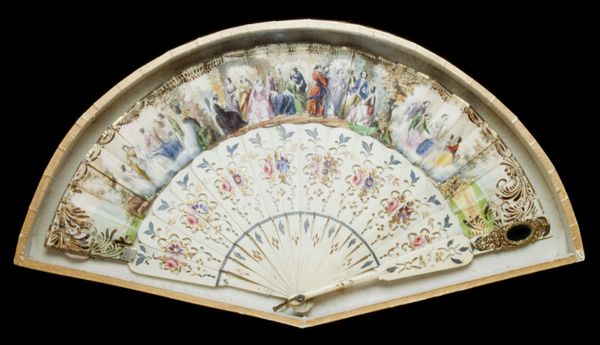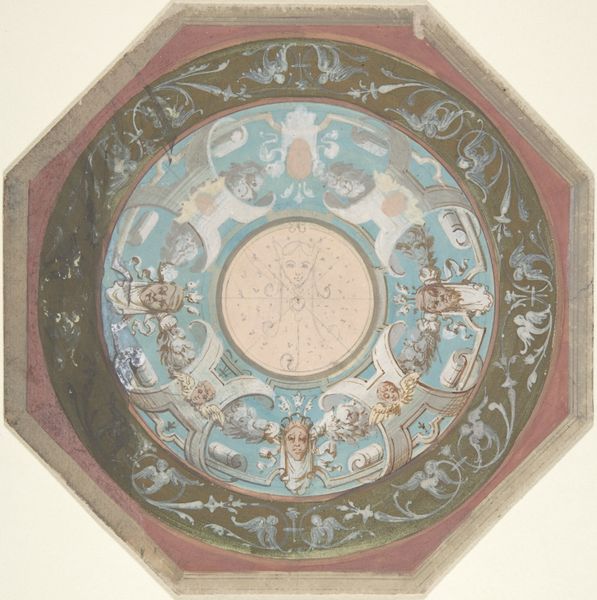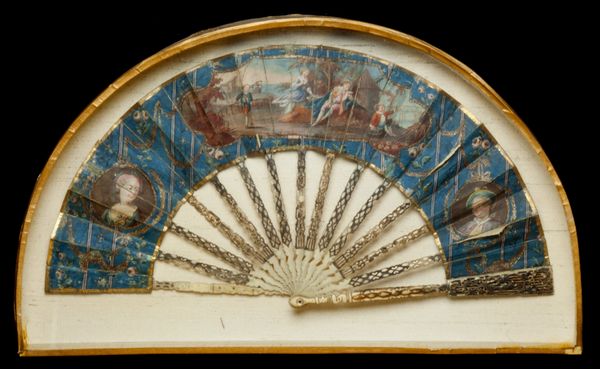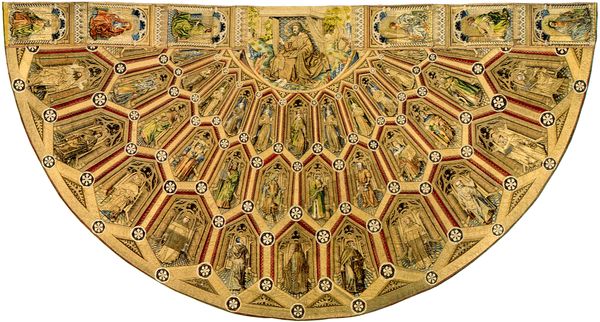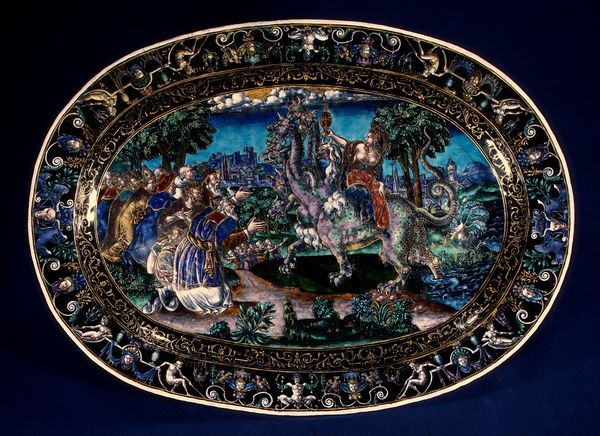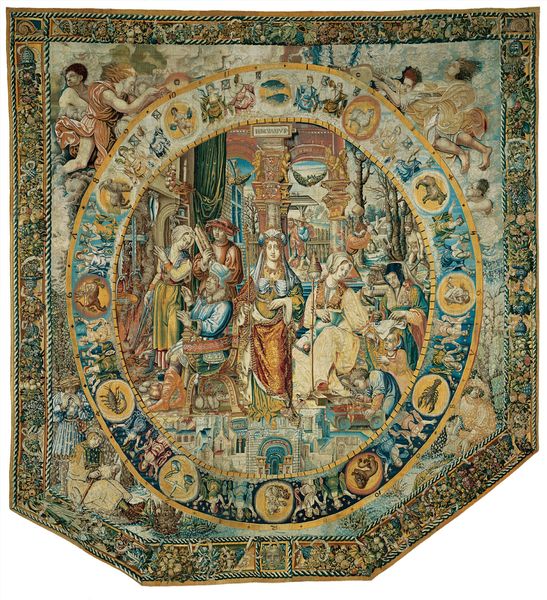
Dimensions: 17 5/8 x 11 in. (44.77 x 27.9 cm) (framed, mounted)
Copyright: Public Domain
Curator: This object is a fan titled "Fishing Port Scene," dating back to the 19th century. It's an example of French Rococo style, crafted using tempera. You can see it here at the Minneapolis Institute of Art. What strikes you about it at first glance? Editor: Well, first off, it feels… dainty. Like a whispered secret at a masked ball. All these delicate figures in pastel hues, crowded into a space barely larger than my hand. It's pretty chaotic, to be honest, for something meant to cool someone down! I can almost smell the salty air mingling with powdered wigs. Curator: That impression is quite astute. Fans such as this one were significant social tools. They communicated status, style, and even coded messages in aristocratic French society. Notice the scene itself—a genre painting capturing everyday life by the port, idealized through a Rococo lens. The composition itself invites us to observe these gentlefolks in a moment of leisure. Editor: I can see that. It’s romanticized, for sure. Like a play staged in miniature. What really tickles me is the thought of someone furiously fanning themselves while simultaneously judging everyone else in the room with this very object! It's a multi-tasking marvel. Curator: Exactly! It reflects the socio-political dynamics of the time. These images affirmed social hierarchies. Wealthy patrons saw reflections of themselves enjoying idyllic, almost theatrical moments. Did these representations always reflect real lives, though? Perhaps less so! This makes these fans excellent primary sources that display visual tropes and the circulation of imagery among the elite. Editor: So, a carefully curated fantasy more than a factual snapshot? That makes perfect sense, especially in a time where appearances were everything. It’s like a tiny propaganda machine, peddling perfection one breeze at a time! What really grabs me, too, are the little people painted on the fan’s pivot, they appear so crammed in the frame as they attend to the leisured. I also love to speculate if this might be considered early tourist art, as an easy object of memorabilia to bring back after spending some time in a town where there is fishing activity, given the picturesque view of the fishing port! Curator: Absolutely! The artistry showcases specific values—the luxury, spectacle, and performativity which defined noble life. In its presentation as both a commodity and artifact, it offers scholars numerous access points into better understanding French culture from this time period. Editor: What started as a pretty trinket has turned into this intriguing peek into another world. It just goes to show, you can learn a lot from a fan if you listen closely. Curator: Indeed, art is all about broadening how you see things. Thank you for lending a different perspective!
Comments
No comments
Be the first to comment and join the conversation on the ultimate creative platform.
